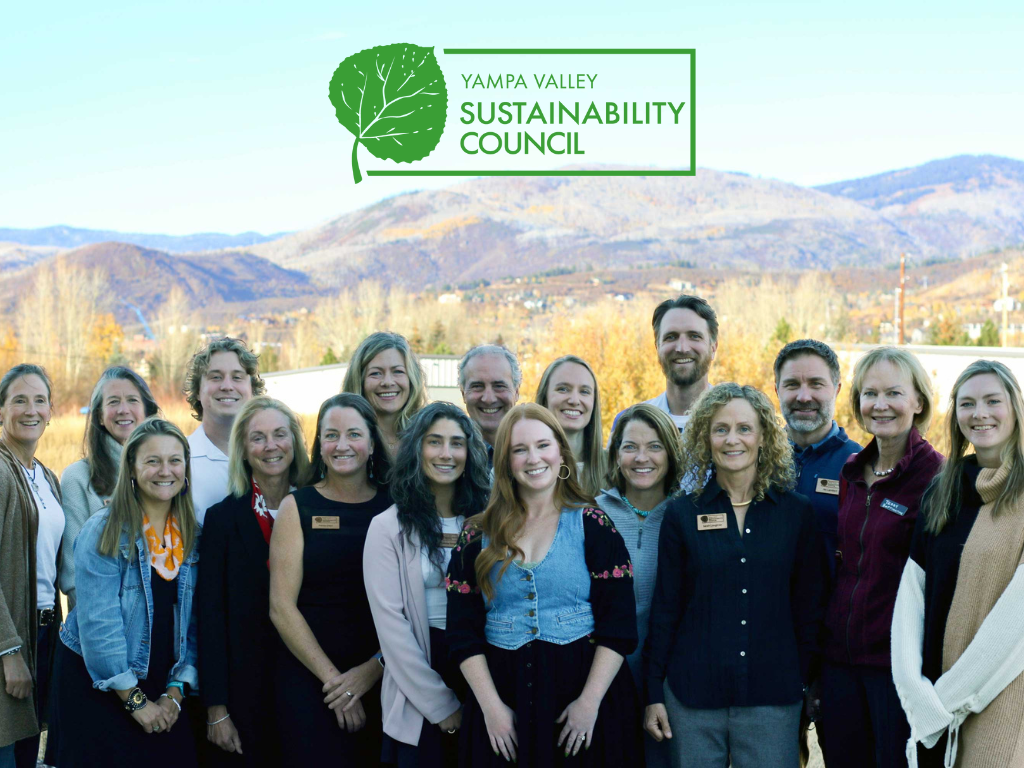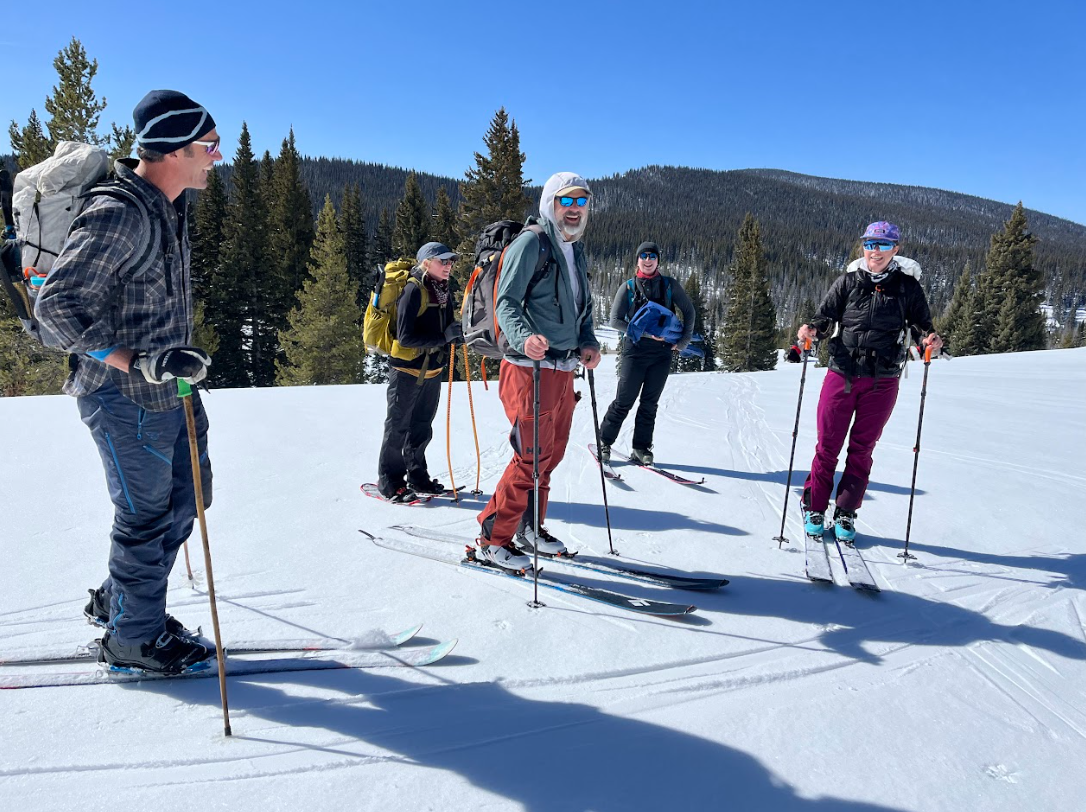APRIL 2, 2019 BY
Article adapted from Steamboat Pilot & Today
STEAMBOAT SPRINGS — Since 1951, the Fetchers have tracked when the snow is completely melted off the hay meadows.
In a little red journal, John Fetcher documented the weather and simplified logs of daily life on the ranch. The family kept up his note-taking after he handed off management of the ranch to his sons and after his death in 2009.
“When we started, it was just observational, but now, with this record, it’s fascinating to use it in a more scientific standpoint,” John’s son, Jay Fetcher, said.
Jay Fetcher copied his father’s data from the red notebook into a spreadsheet. He broke down the data into decades, and within each decade, he determined the average day that snow was off the meadows by and the range between the earliest date it melted off and the latest date it melted off. Nearly every ten years, that range grows larger, and recently, the snow has been melting off sooner.
People have told Fetcher that Clark has the most predictable weather pattern in the state, and he believes it. They buy hay for the cows on the Fetcher Ranch based on the knowledge that the grass won’t be available from Nov. 20 to May 20.
As those dates shift, and as frost-free days arrive sooner on average, he doesn’t think that predictability is going to remain.
“The significant thing to me is how the range (between the earliest and latest days that the snow melts) increases,” he said. “That’s what we observe as people on the ground is incredible variation in climate compared to (past decades).”
An earlier spring
Though having a lot of snow is generally good for the water year, the type and timing of the snow also impacts the western cycle of water.
“It’s not just amount of snowpack we have that is critical, it’s also the type of precipitation we’re receiving, especially in the winter — whether we’re getting rain or snow,” said Orla Bannan, in a Yampa Valley Sustainability Council Talking Green event. Bannan works with water scarcity as strategic engagement manager for the conservation organization Western Resource Advocates in its Healthy Rivers Program.
She added when snow melts is critical, and “we’re seeing changes there.”
Springtime has sprung earlier and earlier in the Yampa Valley, according to data from the Natural Resources Conservation Services’ snow telemetry sites. Snowpack is reaching its peak and melting off earlier in the season. Dust on snowy, windy and sunny days can all increase how quickly snow melts off the mountains.
When that early snowmelt runs off into the streams that feed into the Yampa and Elk Rivers, the rivers also peak earlier. This has impacts to everyone who uses Yampa water.
When the river peaks early, flows can rush by before producers’ crops are ready to use them. The river level appropriate for river recreation in town can fall by early summer, closing the river at the hottest time of the year when many would like to be paddling, fishing or tubing down it. When flows are low, the river is also more likely to warm to temperatures that are unhealthy for trout and other aquatic species.
These changes are forecasted to continue, largely driven by warming global temperatures as human impacts continue to create a hotter atmosphere, according to the 2019 National Climate Assessment, a report authored by several federal agencies and reviewed by members of the National Academy of Sciences.
“In the last 50 years, Colorado has seen greater amounts of precipitation as rainfall as opposed to snowfall, and then snowmelt and subsequent peak flows have shifted by weeks,” Bannan said. “So, we’re already seeing those changes.”
Across the West, states with water cycles reliant on snow are seeing smaller snowpack, with a greater decline at lower elevations, Bannan said. Higher temperatures also intensify droughts as more water evaporates from streams and both crops and wild plant species use more water to grow in hot sun.
Longterm drought
One good year is not enough to mitigate the impacts of a decade of dry years, Bannan said.
Locally, Routt County was only pulled out of drought conditions last week, according to the U.S. Department of Agriculture’s Drought Monitor. Before snowmelt hits the streams, it will first soak into dry soil. While snowpack is above average, river forecasters are still predicting near-average flows in the Yampa.
As of Sunday, snowpack in the Yampa Valley contained 125 percent of its normal snow water equivalent, according to the NRCS, but the National Weather Service is forecasting flows in the Yampa River in April through July to be much closer to average — 91 percent of average at Stagecoach Reservoir and 100 percent in Steamboat Springs.
The Yampa is also part of a much larger watershed, flowing into the Green River and then the Colorado River, and then into Utah, Arizona and Mexico. Colorado is legally obligated to send a portion of its water — including Yampa River water — to downstream states in the form of an annual contribution to Lake Powell.
In recent years, below average water years have increased concern that Colorado won’t contribute enough water to Lake Powell to meet its legal obligations. Should that happen, an interstate call would be administered, requiring water users in Colorado to reduce use to send more water downstream to meet its obligations.
Just as upcoming flows in the Yampa are predicted to be slighter than its snowpack, flows in the Colorado River are predicted to be slighter than its snowpack, meaning the state needs several more good years to soothe water managers worries for Lake Powell.
“We’re going to have a normal year for Lake Powell,” Bannan said. “It’s going to go up a little bit, but it’s not going to go up a lot. It would take an awful lot of wet years for that reservoir to really recover.”
Statewide, water managers are working to plan how to divvy up water should Colorado be required to curtail water use due to an interstate call.
On the Yampa, the city and other partners are working to make the river more resilient to a changing climate. Kelly Romero-Heaney, water resources manager for the city of Steamboat Springs, explained programs to restore trees along the riverbanks will eventually help shade the river, preventing evaporation and temperature increase due to the heat from the sun’s rays. This will allow more of that water to make it downstream.
The city has also partnered with the Colorado Water Trust to increase flows in the river, and a new endowed fund set to launch later this year will help fund river management in the future.
“When it comes to the Yampa River, we don’t exactly know what to expect year-to-year, but we know that if we give the Yampa the ingredients it needs — like conserved lands, flowing water, restored riparian forests — then we’ve done the best we can do to at least help our rive buffer our self against the extremes we have coming our way,” Romero-Heaney said.
To reach Eleanor Hasenbeck, call 970-871-4210, email ehasenbeck@SteamboatPilot.com or follow her on Twitter @elHasenbeck.






